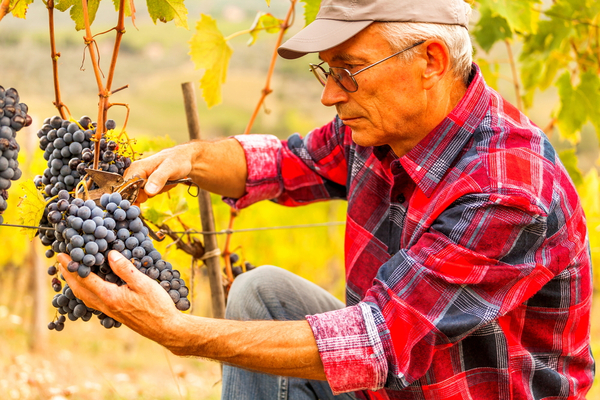On April 2, President Trump imposed wide spread tariffs across all global trade partners, including the EU and the UK, which will have an immediate and lasting effect on American wine, beer and spirits consumers.
As Reuters reports, U.S. drinkers will now pay more for cocktails, champagne and foreign beers, brands will disappear from bar menus and jobs will be lost on both sides of the Atlantic as a result of U.S. President Donald Trump’s reciprocal tariffs, drinks industry bodies and analysts said on Thursday.
Trump’s latest round of global and country-specific tariffs was set to hit everything from the popular negroni cocktail, based on Italy’s Campari liqueur, to Guinness stout, made by the world’s top spirits producer Diageo.
And in case you thought that beer might have escaped the wide tariff net, think again. The President also introduced a 25% levy on all beer imports and added beer cans to existing aluminium tariffs, hitting labels such as Mexican-made Corona and Dutch Heineken.
There was a small bright spot, as threats of 25% tariffs affecting Mexican tequila and Canadian whisky did not materialize. And a threatened 200% tariff on European alcohol also remained outstanding… for now. However, industry bodies said the levies laid out on Wednesday were already high enough to hurt sectors that rely heavily on U.S. drinkers for sales.
European spirits exports alone to the U.S. stood at 2.9 billion euros ($3.18 billion) in 2024, according to trade body spirits Europe, which said many U.S.-based jobs also relied on this trade. French groups and officials warned of a 20% slide in sales and mass layoffs in regions like Cognac, where French brandy is produced for export, largely to the U.S. and China. The Spanish Wine Association warned no market could offset lost sales in the United States.
Winners and Losers
“Many labels, which cannot be replaced by local production, will disappear from the tables of U.S. consumers, while a serious production and employment crisis is looming in Italy and Europe,” Micaela Pallini, president of Italian trade association Federvini, said in a statement.
Japanese drinks maker Suntory said it will focus on selling spirits in countries where they are made as a result of tariffs. Analysts at UBS estimated that large listed spirits makers would have to hike prices by between 2% and 5% to cover the tariffs, or absorb the cost themselves and take a similar hit to operating profit.
Serious discussions about prices were underway now that tariff rates are known, said Tammy Curtis, senior vice president of commercial finance at Republic National Distributing Company, a top U.S. spirits distributor. “There will be winners and losers,” she said, adding products where more of the tariff can be absorbed throughout the supply chain will fare better.
Sales of products like wine and cognac are already falling in the United States. French and Spanish wine producers told Reuters U.S. drinkers would have to pay some of the cost of tariffs. This would actually hurt U.S. wine businesses more than foreign counterparts, the U.S. Wine Trade Alliance added.
Tariffs Could Actually Have a Negative Effect on California Winegrowers
However, the proposed 200 percent tariff might have a paradoxical effect: it could encourage some big US wineries to import even more foreign bulk wine to replace wine made from California grapes. As Wine-Searcher reports, this is because of a tax loophole called a “duty drawback” that refunds duties, including tariffs, paid on imported wines if the producer also exports wine.
The policy has led the US government to spend more than $200 million in the last six years subsidizing imported bulk wine, according to Stuart Spencer, executive director of the Lodi Winegrape Commission. “When California grape prices go up, bulk wine comes in and drives prices back down,” Spencer told Wine-Searcher. “We’ve lost about 10 percent of market share over the last 20 years, and 60 to 70 percent of that is due to bulk imports.”
The proposed tariffs comes from the White House; duty drawback was something Congress passed in 2004. The White House may not be aware of the implications of the combination, and may not be able to fix them when it does. It may require Congress to address the duty drawback.
John Duarte, a former Republican Congressman from Modesto, whose family owns the largest grapevine nursery business in the country, is one of many growers in California’s San Joaquin Valley who appreciate that Trump is trying to address structural trade imbalances. However, Duarte says the duty drawback could make the proposed tariffs counter-productive. “The tariffs are well-meant by the administration to help growers and domestic wine producers,” Duarte told Wine-Searcher. “I think there’s a real chance they have a negative impact.”
Nowhere to Go
Strategies used to mitigate tariffs during Trump’s first term, such as shipping wine in bulk, would not help with these blanket levies, Allan Sichel, chairman of Bordeaux wine lobby CIVB, said. Some producers may be able to shift manufacturing or parts of it, such as bottling.
Other products like French champagne or Scotch whisky have to be made in specific countries or designated regions and cannot move production. The Irish whiskey sector exports 40% of its production to the U.S., which drives growth and helps fund expansion in other markets, said Eoin O Cathain, head of the Irish Whiskey Association.
Companies may now shift their focus elsewhere, he continued, especially given ongoing uncertainty. While Europe was spared the 200% tariff Trump has threatened to impose for the time being, it could still come if Europe’s retaliation hits U.S. spirits, such as bourbon whiskey.
“If it goes up to 200%, that’ll be game over. The U.S. market will be finished,” said Frederic Zeimett, CEO of Champagne Leclerc Briant which exports to the United States.
—
Photo Credit: Lukasz Szwaj / Shutterstock.com
